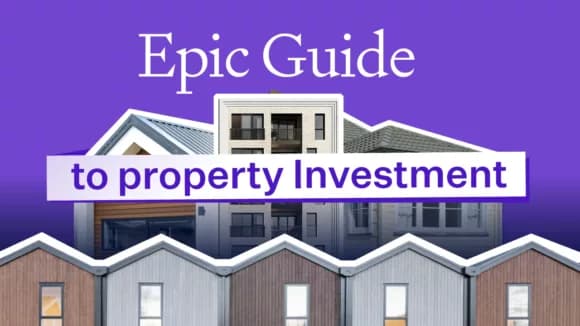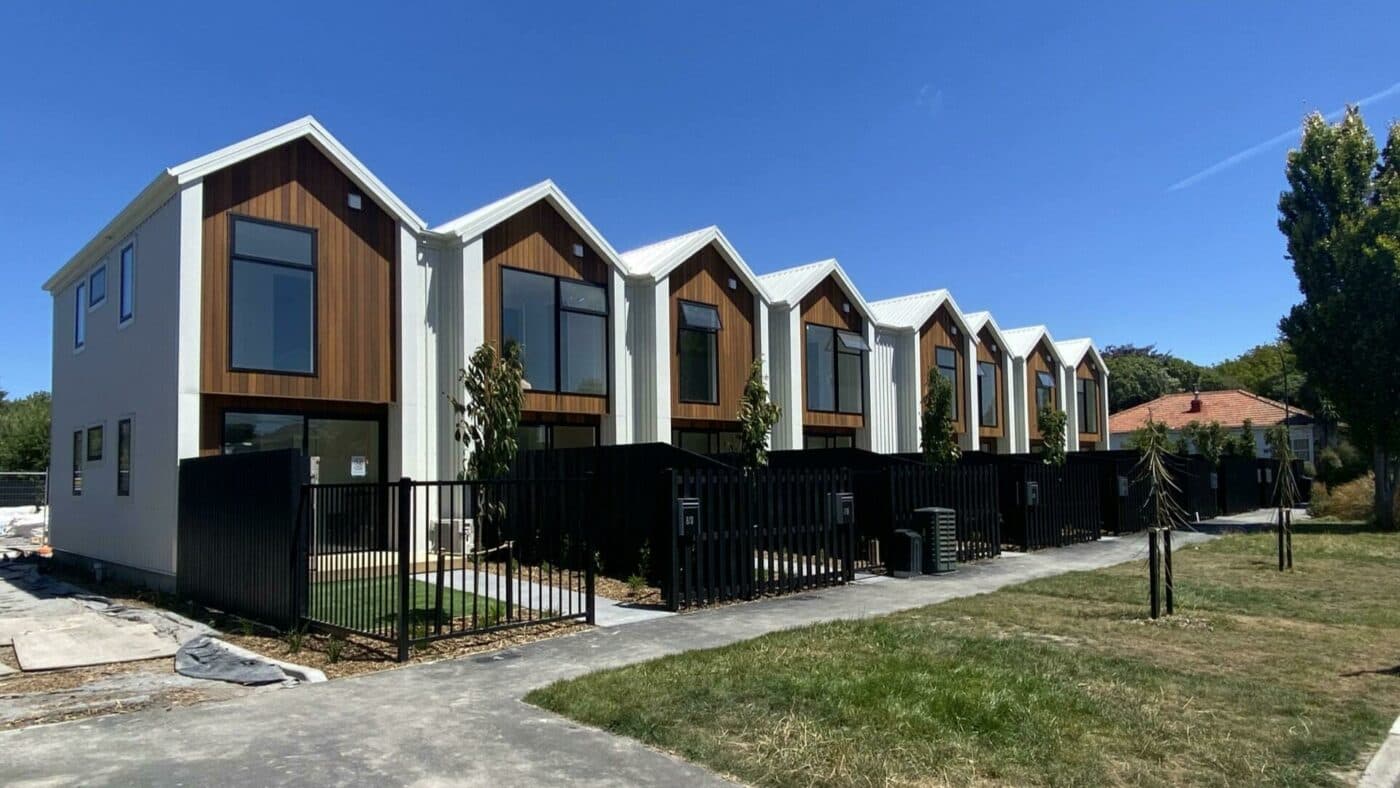
Property Investment
Property investment NZ – The epic guide to property investment
Explore the latest in NZ property investment with our comprehensive 2026 guide. Gain insights into strategies and detailed steps for success.
Property Investment
6 min read

Author: Laine Moger
Journalist and Property Educator, holds a Bachelor of Communication (Honours) from Massey University.
Reviewed by: Ed McKnight
Resident Economist, with a GradDipEcon and over five years at Opes Partners, is a trusted contributor to NZ Property Investor, Informed Investor, Stuff, Business Desk, and OneRoof.
Every investment needs to be based on numbers.
There are two main numbers you need to know when you invest in a property:
1. Return on Investment, and
2. Cashflow per week
Cashflow is the easy one. It’s the amount of money you need to either top-up the property per week, or that is coming to you per week.
Return on Investment (ROI) is more complex. Lots of people have an idea of what it might mean, but what does it actually mean when it comes to property investment?
In this article, you’ll learn what a ROI is, how you calculate it, and how it can be used when deciding which investments are good and which are bad.
Do you have a question or comment about Return on Investment? Feel free to leave your thoughts in the comment section at the end of the page.
ROI stands for Return on Investment and it asks: For every dollar I invest in a property, how many dollars do I get back?
For example, let’s say a property gives a 200 per cent return on investment. That means that for every dollar you invest, you’ll get:
So, $1 = $1 + $2
And because we’re talking about investing a lot of money into property, those extra dollars start to add up quickly.
You can measure return on investment over any period. But, here at Opes Partners, we always measure it over 15 years.
It’s important to run these numbers because different properties give different returns, and this will impact how much money you make.
Say you had $200k to invest, and you had the choice of investing in an apartment or a townhouse.
The apartment has a return on investment of 180 per cent, and the townhouse has a return on investment of 280 per cent.
For the apartment, you invested $200k. So your 180% return means over 15 years you get back your original $200k + $360k.
For the townhouse, you invested $200k. So your 280% return means over 15 years you get back your original $200k + $560k.
In this example, you would have made an additional $200,000 because you chose the property that delivered a higher return on investment.
Key point: choosing a property with a higher return on investment will make you more money.
To calculate return on investment, you need to:
1. add up all the ways you could make money through a property
2. calculate the different types of investment you make
3. Compare the two.
There are 4 types of return you can get from your property:
1. Capital growth – the property increases in value
2. Cashflow – the property earns you money from rent
3. Debt repayments – you pay down the mortgage (which builds wealth)
4. Instant equity – you renovate the property and it goes up in value
But remember, you’ve also put some money into the property, such as:
1. Your deposit
2. Any cashflow you contribute to that property (a top-up)
So to calculate Return on Investment, you add all these up and then divide the return by your investment.
Here’s an example comparing three different properties:
But here’s the thing – calculating this is all VERY complex. So here at Opes we’ve created a free spreadsheet that you can download to run these numbers for your own investment properties.
A common question we get asked here at Opes Partners is: “What level of return on investment should I aim for? What’s a good return on investment?”
There is no answer (frustrating I know), because it depends on the assumptions you put into the calculator, and it depends on how the market changes (especially interest rates).
So, don’t aim for a specific number. Instead, you need to look at the return on investment for multiple properties under the same set of consistent assumptions. This will let you see which looks to be a better investment.
Here is a case study that shows return on investment in practice.
Here at Opes Partners, we recently recommended a development of 8 townhouses on Cross Street in Christchurch. Each townhouse had 2 bedrooms, 1 bathroom and off-street car parking.

When we ran the numbers, Cross Street came back with a return on investment of 236%. But is that good or bad?
We had to compare it to other properties on the market to see.
For this we looked at three properties:
Cross Street is the most affordable of the three properties. But does it have a good return on investment? Here’s what it looks like when you dig into the details:
What does it show? For every dollar you put into:
So, from this financial modelling you’d say “Cross Street is the better investment”
Common tools like gross yields, net yields, and annual cashflow, are great for telling you what your property is making right now.
But they don’t tell you how well your property is going to perform as an investment, some 15-20 years into the future (the length of time you are going to hold your property).
And they only analyse your investment from one angle – the amount of rental income.
Whereas return on investment takes a longer term view and takes more factors into account (capital growth, cashflow, paying off debt and instant equity).
No. When you run any sort of financial modelling (for a property or a share) the exact numbers will end up wrong.
Because (for example) properties don’t grow by the same percentage every single year, and interest rates change.
But does that mean running the numbers and creating a forecast is worthless?
No, because you need some basis for deciding which properties you invest in and which ones you don’t because, as we saw at the start of this article, you can miss out on big returns if you choose the wrong property.
And in order to run any sort of calculation you need to make assumptions about:
And so many more things.
Will these assumptions be perfect and 100% accurate? No.
But that’s not the point. The purpose isn’t to be right, it’s to ask “under these assumptions, which is the best investment?”
That way you can have confidence that you’ve done your best and chosen the best investment based on what you think might happen in the future.
Therefore, all things considered, basing your investment decision on detailed financial modelling of long-term forecasting will most likely lead you to a better investment decision.
If anything it will likely put you in a better position than not doing any calculations at all.
You can do this analysis yourself for free. The most accurate tool we’ve found is our return on investment spreadsheet.
It’s free to download, and over 8,000 investors across New Zealand are using it to forecast their investment property’s cashflow.
If you’re not a big Excel fan, no trouble, because if you’re working with a financial adviser from Opes they will create these forecasts for you.
Journalist and Property Educator, holds a Bachelor of Communication (Honours) from Massey University.
Laine Moger, a seasoned Journalist and Property Educator holds a Bachelor of Communications (Honours) from Massey University and a Diploma of Journalism from the London School of Journalism. She has been an integral part of the Opes team for four years, crafting content for our website, newsletter, and external columns, as well as contributing to Informed Investor and NZ Property Investor.
This article is for your general information. It’s not financial advice. See here for details about our Financial Advice Provider Disclosure. So Opes isn’t telling you what to do with your own money.
We’ve made every effort to make sure the information is accurate. But we occasionally get the odd fact wrong. Make sure you do your own research or talk to a financial adviser before making any investment decisions.
You might like to use us or another financial adviser